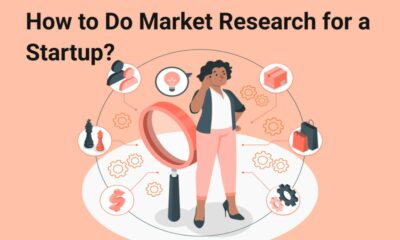Business
Integrating Experiential into Larger Business Strategy

To combat advertising fatigue, more companies are turning to experiential marketing—creating powerful memories for participants while connecting with the people who genuinely want to interact.
Outdoor Voices, an athleisure brand, leveraged the power of experiential via pop-up shops to allow its target customers to immerse themselves in the brand story as well as touch and see merchandise for themselves. The strategy worked so well that the pop-ups became permanent stores, and the brand’s recent $9 million funding round indicates investors believe in the continued success of its hands-on approach.
However, proving the return on investment of experiential isn’t as cut and dried as tracking the click-through rates of your online ads. That said, measuring the return on experiences and events is far from impossible, and by learning how to do so, marketers can justify their expenses to the C-suite while improving the effectiveness of their campaigns.
Turning Experiences Into Revenue
Not every great experience makes a great experiential marketing event. To prove the ROI of live engagements, marketers must set the stage for data collection and funnel tracking.
Customers are willing to give up their information in exchange for interesting experiences. To blend work and play, marketers should gamify campaigns to encourage active customer interaction in exchange for valuable data.
Some of the best experiences lean on technology for this purpose. Leveraging technology at your event has been shown to increase attendance by 20 percent and productivity by 27 percent, while decreasing costs up to 30 percent. When registering RFID wristbands and syncing a smartphone become part of the show, customers are inclined to participate—even knowing the company will capture their data in the process.
With data in hand, the challenge becomes tracking the entire customer journey to trace conversions back to events. Customer experiences begin with technology interactions, contests, social sharing opportunities and administrative steps, like registration. If marketers don’t capture this data and connect it to online interactions, no one can prove the customer journey included a live experience.
To capture data, however, marketers must first plan successful events.
Executing a Memorable Event
In marketing events, company objectives come first. The customer experience comes second.
Like any other strategy, marketers must understand why they’re hosting an experience before considering how to accomplish those goals. Effective measurement of event ROI depends on how the brand defines success. Is the point to increase brand awareness or social reach? To build excitement for a new product?
To use the right measurement tools, marketers must first understand how the experience fits into the larger objective and which metrics to collect. Follow the four-step strategy: plan, capture, measure, and optimize.
During the planning phase, identify the data your partners want to measure and design a method to do so, including appropriate tools. Next, capture, focusing on converting customer attention into quantifiable results through a blend of traditional and proprietary metrics. After the event ends, measure, analyzing social amplification and consumer behavior changes to see the event’s effect in motion. Finally, optimize, drawing insights from the data to make the next event even better.
1. Build long-term customer connections.
Encourage consumers to dive deeper into what makes your company special. How does your interactive experience encourage better customer relationships, and how do those relationships extend beyond the event?
Use live experiences to build emotional connections, then extend those connections to social media campaigns. Promote videos and fan-made content from the event. Follow up with people who gave their information at the experience by thanking them with personalized communications and inviting them to interact further.
2. Capture and measure better data.
Customers have good ideas, but very few send cold emails to companies that express how they feel. Use events to solicit customer feedback on likes, dislikes and unaddressed pain points, then combine that data with existing information to create products people want and content they will stop to view.
Add event information to customer profiles and track response rates to discover which strategies, content pieces, and channels provide the highest ROI. When events complement existing marketing initiatives, everyone benefits.
3. Combine channels to maximize impact.
Effective experiential campaigns don’t end when the event is over, nor do they begin on the day of the event. Lead up to experiences with teasers to build hype, cover the event on social media as it happens, then use content developed at the event to drive current campaigns and lead into new ones.
According to Aspect, businesses with omnichannel strategies enjoy customer retention rates 91 percent higher than their competitors. Consumers love to see their experiences (and the authentic experiences of others) spread online. Bring the content to the customer on every channel possible by using event information and content to personalize the experience and keep prospects moving down the funnel.
The ROI of experiential marketing might be harder to prove than the ROI of Facebook ads, but that’s not because events don’t drive engagement. Experiences provide unique opportunities to collect customer data, increase brand visibility, and boost the effectiveness of other campaigns.
Source:
https://www.chiefmarketer.com/integrate-experiential-larger-business-strategy/
-

 Business4 weeks ago
Business4 weeks agoBudget-friendly Strategies for Market Research When Starting a Business
-

 Business4 weeks ago
Business4 weeks agoSignificance of Small Business Saturday, an Annual Shopping Holiday
-

 Education3 weeks ago
Education3 weeks agoSwiss International University Acquires Four Prestigious Academies in Switzerland, Dubai, and Kyrgyzstan for $21.7 Million
-

 Startup2 weeks ago
Startup2 weeks agoAdam Strobel: Navigating the Shift from Tech Start-Up to Industry Leader
-

 Business3 weeks ago
Business3 weeks agoHow Efficiency is Key to a Small Business’s Customer Service Platform
-

 Business4 weeks ago
Business4 weeks agoSuccessful Small Business Marketing Strategies to Market Your Brand
-

 Health2 days ago
Health2 days agoFrom Hair Loss to Hair Restoration: How Men Are Tackling Balding in 2025
-

 Tech1 week ago
Tech1 week agoAmazon is Expanding Its Strategic Partnership with Intuit by Providing Its Millions of Third-party Sellers with Intuit QuickBooks Software













